When it comes to food, color matters. A bright mix of fruits on your plate doesn’t just look better—it often means more nutrients, too. From deep reds to sunny yellows, we’re used to seeing fruits in all kinds of shades. But what about teal?
Well, teal is not a color you’d expect to find in nature’s fruit basket. Most fruits stick to the usual colors like red, green, orange, or purple. Still, some rare fruits—and a few familiar ones—can take on a teal or teal-like appearance under certain lighting, ripening stages, or because of their unique skin texture.
In this list, we’ll explore 17 surprising fruits that might just show off a teal tint—at least for a moment. They’re unusual, eye-catching, and perfect for anyone who loves discovering nature’s little surprises.
1. Juniper Berries
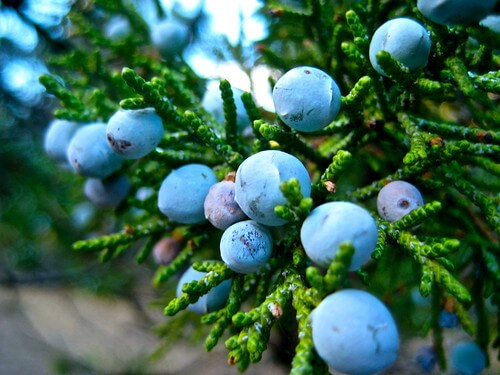
Although technically not true berries, juniper berries are fleshy cones from the juniper plant. When mature, they’re deep bluish-purple, but often covered in a natural, powdery bloom that can give them a muted teal-gray appearance—especially in cooler, shaded environments. This unique hue adds to their mystique, and they’re famously used in gin production, where their aromatic compounds lend a sharp, piney flavor.
2. Damson Plums
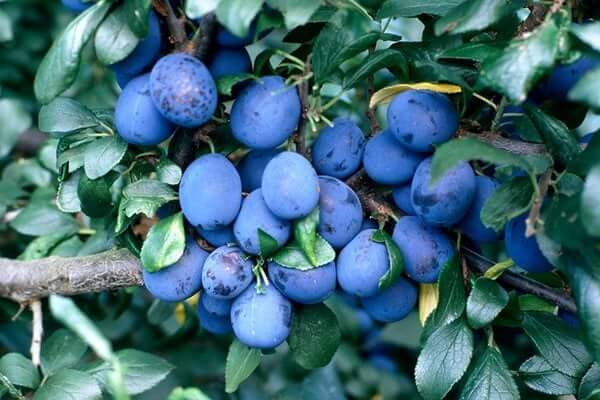
Damson plums are small, tart fruits with dark skin that may appear nearly black at peak ripeness. However, before full maturity, or when coated in their natural waxy bloom, the skins can take on a dusty teal or bluish-green cast. This soft, frosted look is especially noticeable when the plums are fresh from the tree and have not been polished or washed.
3. Blue Java Banana (Ice Cream Banana)
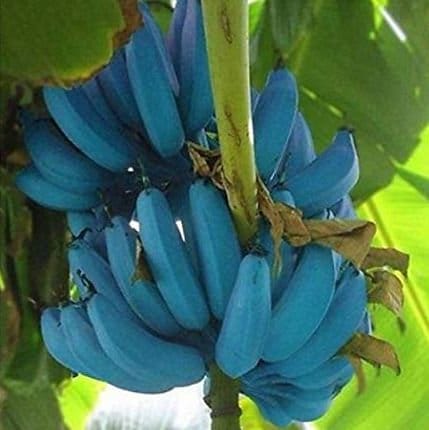
This banana variety is known for its striking silvery-blue skin while unripe—often interpreted as a pale teal under certain lighting. This shimmering hue fades as the fruit ripens to a creamy yellow. Native to Southeast Asia, the Blue Java is prized not just for its color but for its sweet, vanilla ice cream–like flavor and soft, dessert-like texture.
4. Sea Holly Fruit (Eryngium spp.)
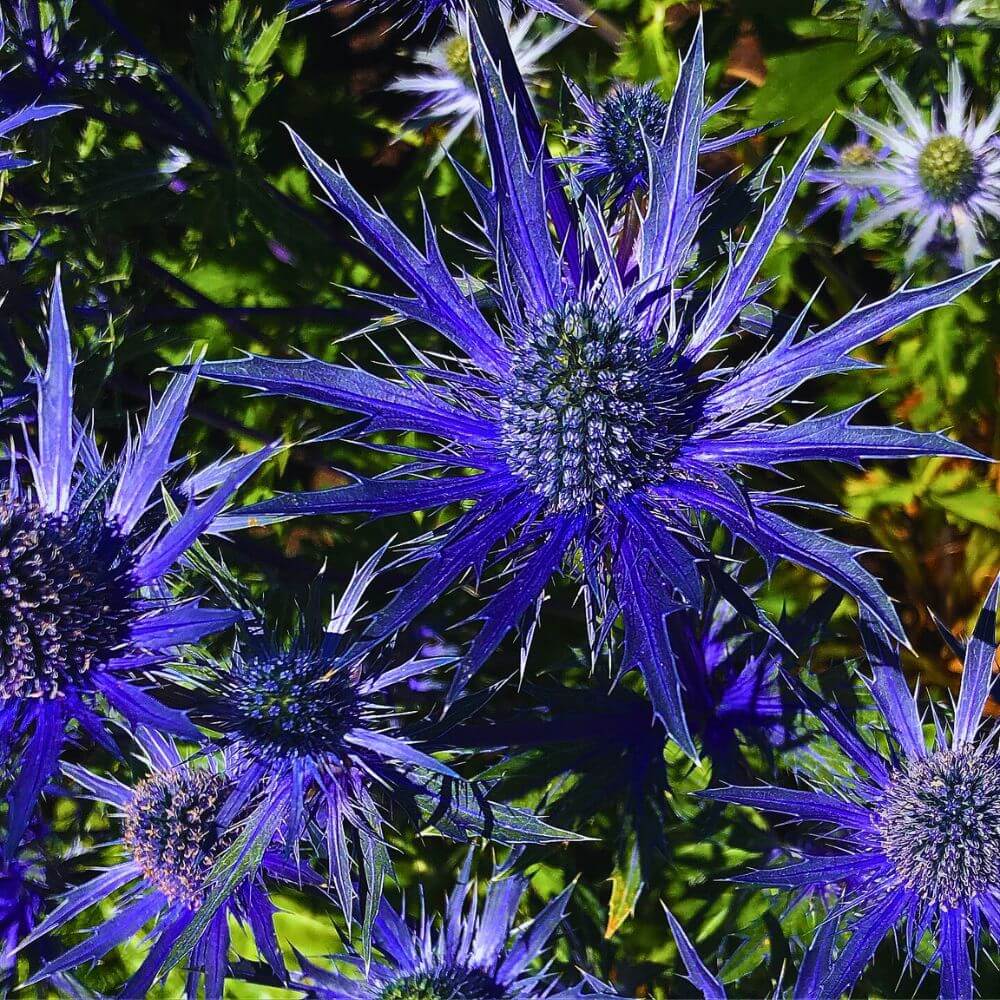
While not commonly consumed, the seed heads of sea holly plants are a stunning visual feature in gardens and floral arrangements. These spiky, globe-like fruits and their bracts often display a metallic teal to steely blue coloration. The hue intensifies in direct sunlight and gives the plant a surreal, otherworldly look. It’s more ornamental than edible, but a prime example of nature’s rare teal tones.
5. Concord Grapes
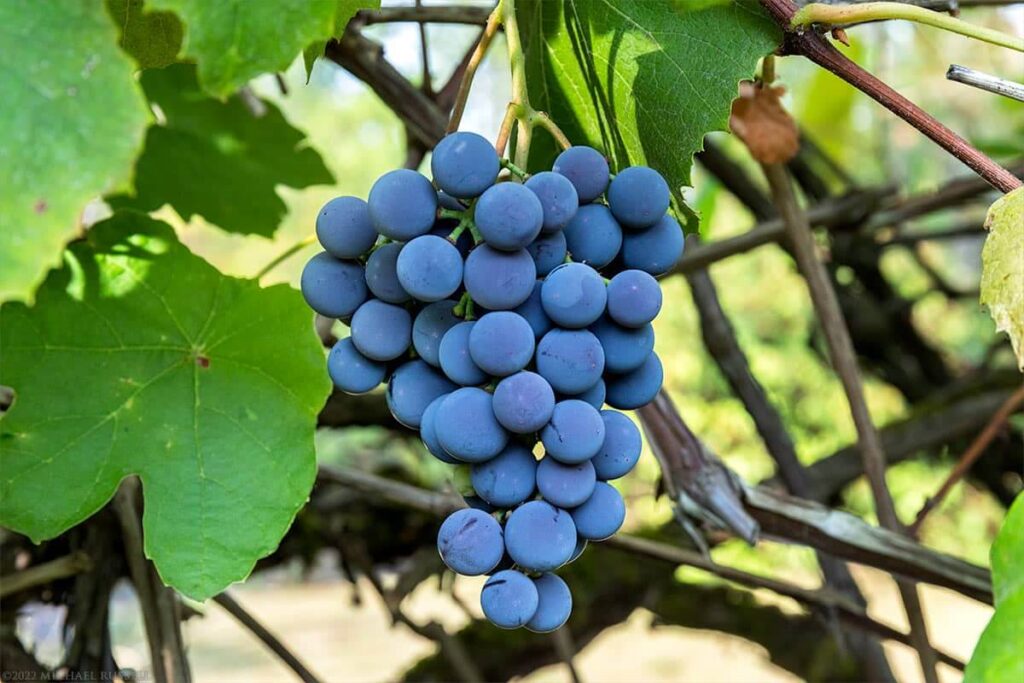
Concord grapes are typically deep bluish-purple, but the combination of their waxy skin and bloom can sometimes reflect teal tones, particularly in early morning or filtered light. These grapes are used in jellies, juices, and even wine. Their skins carry antioxidants, and the slight teal sheen adds visual appeal to fresh bunches.
6. Blue Olives
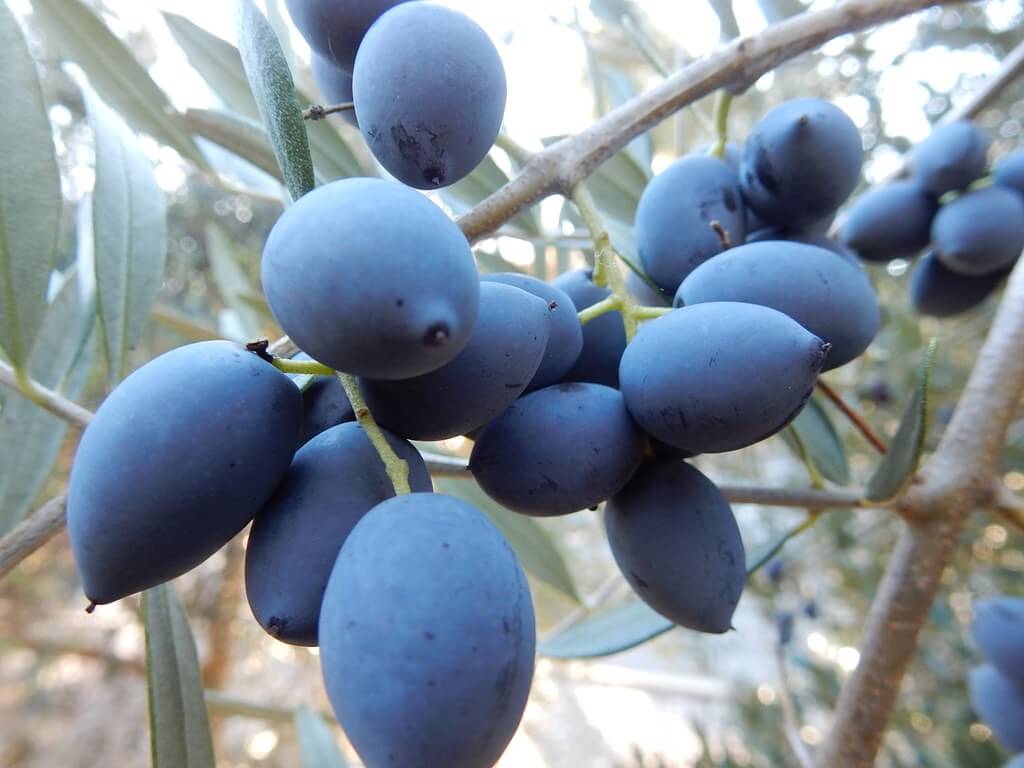
Some rare olive varieties—especially when cured or ripening—develop a deep blue to teal-gray tint due to their waxy skins. Though most olives appear green or black, under certain curing methods or lighting, these rarer types may reflect subtle teal hues. The bluish tones are more common in heirloom or ornamental varieties not typically found in grocery stores.
7. Blue Marble Tree Fruit (Elaeocarpus angustifolius)
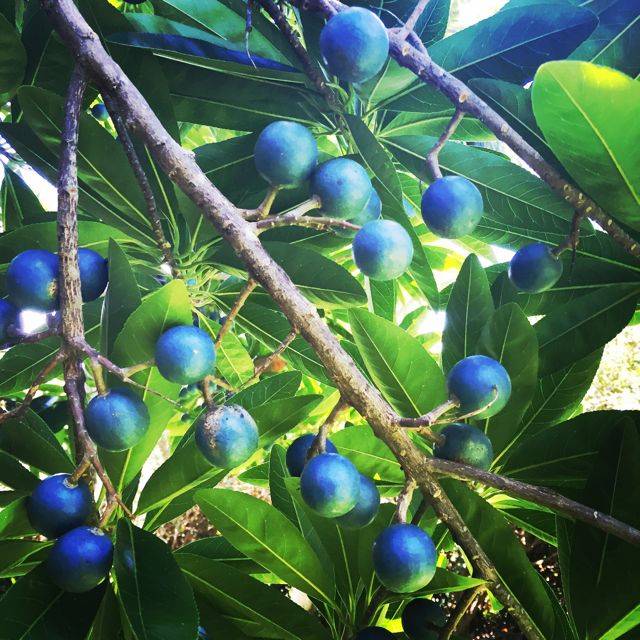
This vibrant, tropical fruit grows on the Blue Marble tree, native to parts of Australia and Southeast Asia. The fruit has a glossy, hard shell that ranges from deep blue to bright turquoise—sometimes bordering on teal. While the fruit is inedible or mildly toxic to humans, its surreal color has made it a fascination in botanical collections and landscape design.
8. Honeyberry
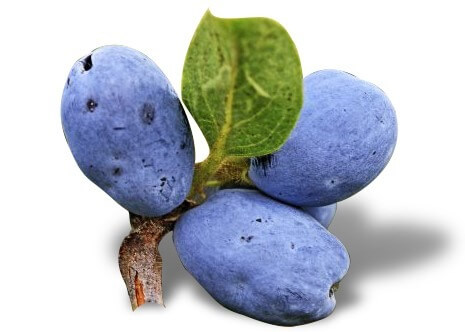
Also known as haskap, honeyberries are oblong fruits that resemble stretched blueberries. Their dusky blue-purple skin often shows hints of teal, especially when covered in natural bloom. The fruit is edible, rich in antioxidants, and has a tangy-sweet flavor reminiscent of blueberry and raspberry blends. Their cold-hardy nature makes them popular in northern climates.
9. Sloe (Blackthorn Fruit)
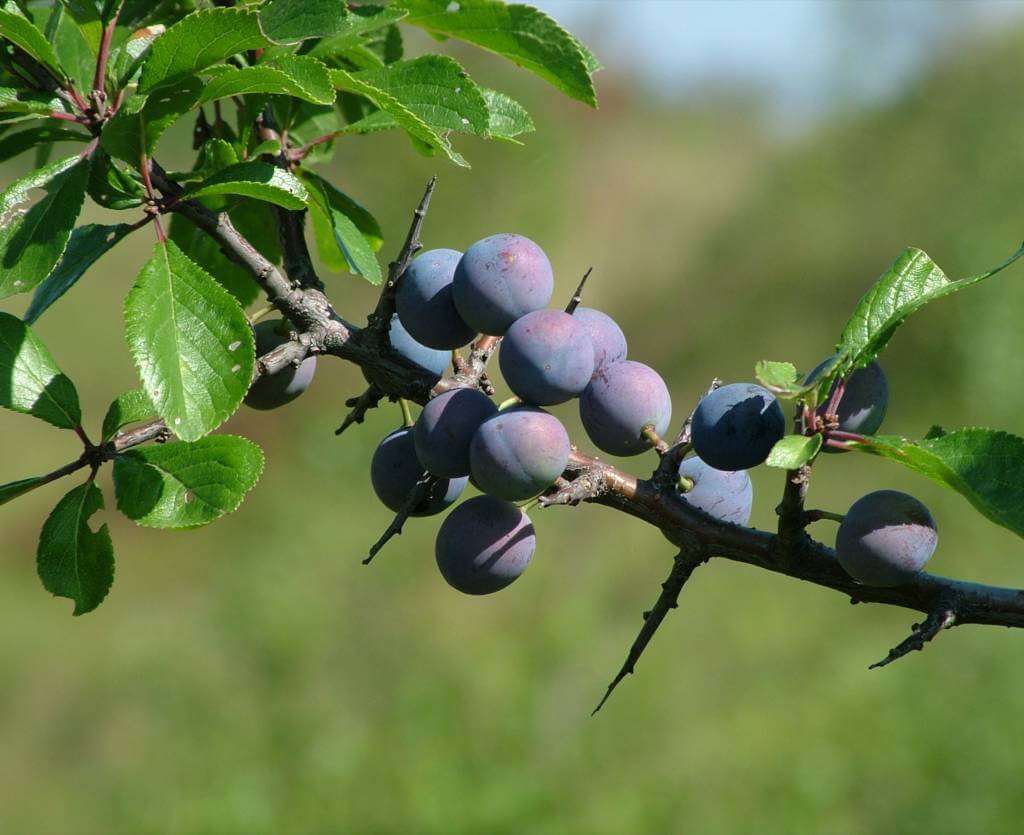
Sloes are small, dark berries from the blackthorn bush. Though typically deep purplish-black, they often carry a misty bloom that reflects light in a way that can appear bluish-teal. Used primarily in sloe gin, these berries are very tart and almost inedible raw, but prized in flavoring and preserving.
10. Kasturi Mango
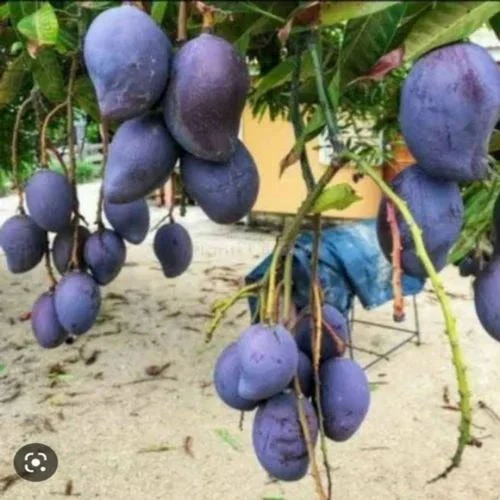
This lesser-known mango variety, native to parts of Southeast Asia, sometimes exhibits a bluish-green or teal-tinged skin when unripe. The color is most visible in shade or when the mango is coated in a natural bloom. As it ripens, it transitions into the more familiar golden-yellow. It’s known for its rich flavor and fibrous flesh.
11. Filius Blue Pepper

This ornamental chili pepper starts off a deep purplish-blue, and in some lighting—especially under natural sunlight—it can appear to have a teal-blue sheen. As the fruit matures, it shifts to red. Though primarily grown for appearance, Filius Blue peppers are edible and have a moderate to hot spice level, making them both beautiful and functional in the garden.
12. Laurestine (Viburnum tinus) Berries
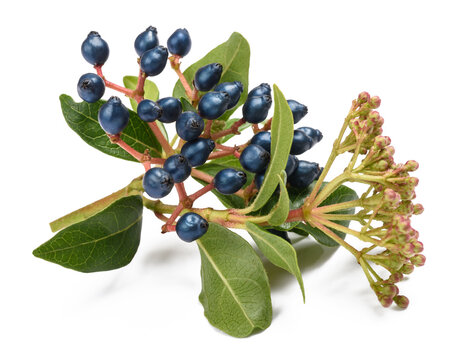
The berries of the laurestine shrub are small, metallic, and often described as having a blue-black or blue-teal luster. The glossy finish of the fruit reflects light in a way that creates hints of teal or turquoise, especially against the plant’s dark green leaves. While not commonly eaten by humans, they are attractive to birds and provide visual interest throughout winter.
13. Akebia (Akebia quinata)
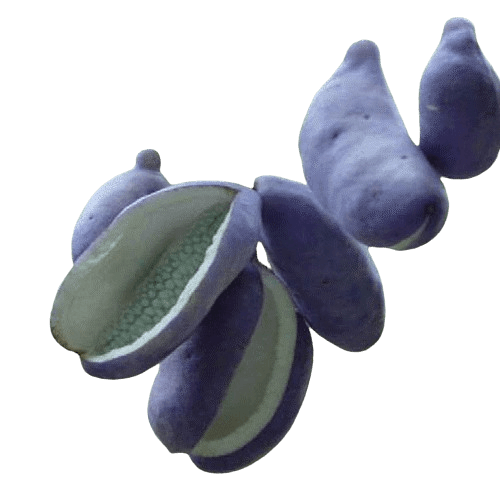
Akebia is a rare, exotic fruit native to Japan, known for its striking appearance. When immature or freshly harvested, the outer rind of the fruit can show a bluish-purple hue that may lean toward a soft teal or lavender-teal under certain lighting, especially when light reflects off its smooth, matte surface. As it ripens, the pod typically splits open to reveal a gelatinous, seed-filled interior that contrasts beautifully with the rind. While the inside is mildly sweet and eaten raw, the bitter rind is often cooked or pickled.
14. Bilberry (Vaccinium myrtillus)
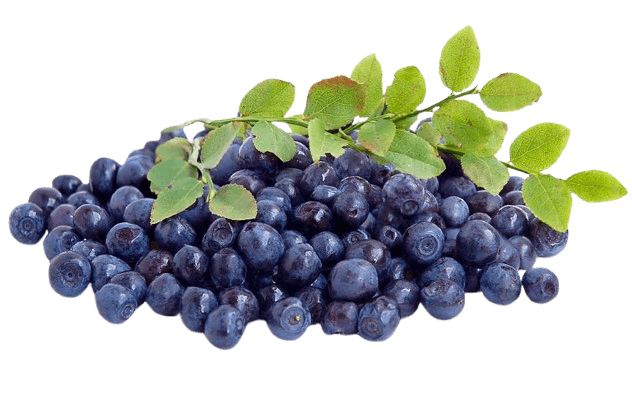
Closely related to blueberries, bilberries are deep blue to almost black when ripe, but their skin can exhibit a bluish-green or teal tint due to a natural waxy coating. Under certain lighting, especially in shaded forest conditions where they grow wild, this subtle sheen can give the berries a teal-gray effect. The fruit is rich in antioxidants and is commonly used in jams, pies, and traditional herbal remedies.
15. Dead Man’s Fingers (Decaisnea fargesii)

This unusual fruit gets its name from its long, finger-like shape and ghostly appearance. The pods are typically a bluish-gray, but in cooler light or at specific ripening stages, they can appear strikingly teal or blue-green. Native to the Himalayas and parts of China, the soft, jelly-like pulp inside is sweet and edible, though the plant is often grown more for its ornamental and curious appeal.
16. Marble Berry (Pollia condensata)
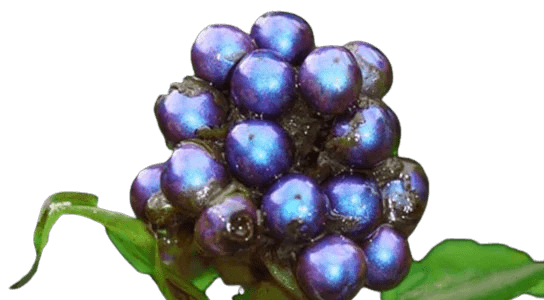
Not an edible fruit, but Marble Berries are one of the most visually striking examples of naturally occurring metallic blue-teal color in plants. The fruit’s skin reflects light using structural coloration, not pigment, which makes it shimmer with an intense teal-blue iridescence. Found in African forests, these berries aren’t eaten by humans but play a role in plant reproduction by attracting birds that are drawn to their luminous color.
17. Safou (Dacryodes edulis)
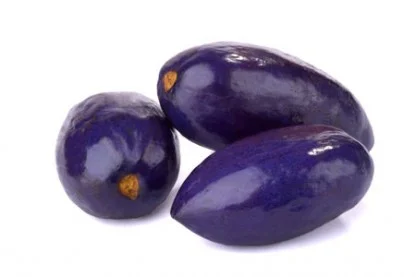
Also known as African pear or butterfruit, Safou is native to Central and West Africa. The fruit starts off with a dark green to bluish outer skin, which can appear teal under certain conditions due to its waxy surface. As it ripens, the skin may darken further, and the flesh becomes soft, creamy, and edible after slight roasting or boiling. Its unique flavor and rich oil content make it a nutritious staple in many local cuisines.
